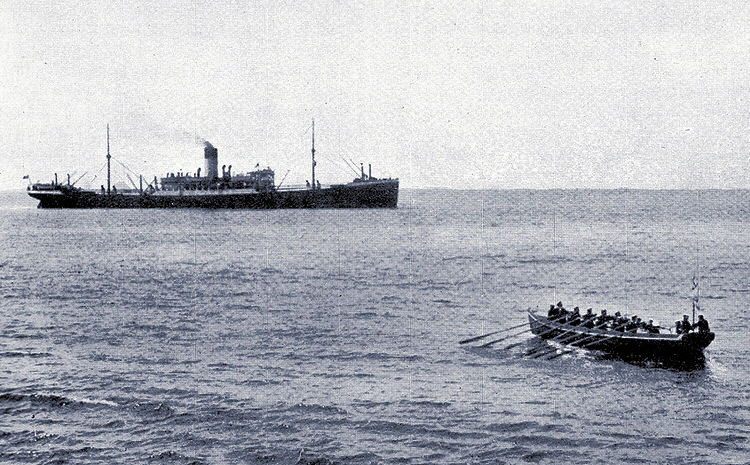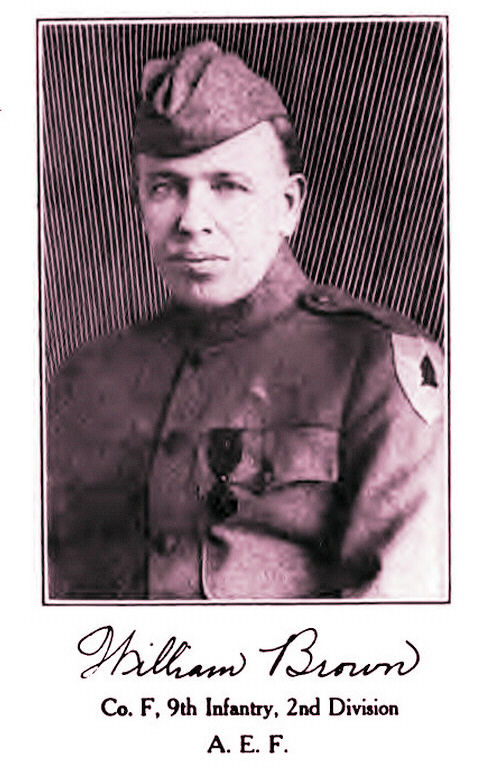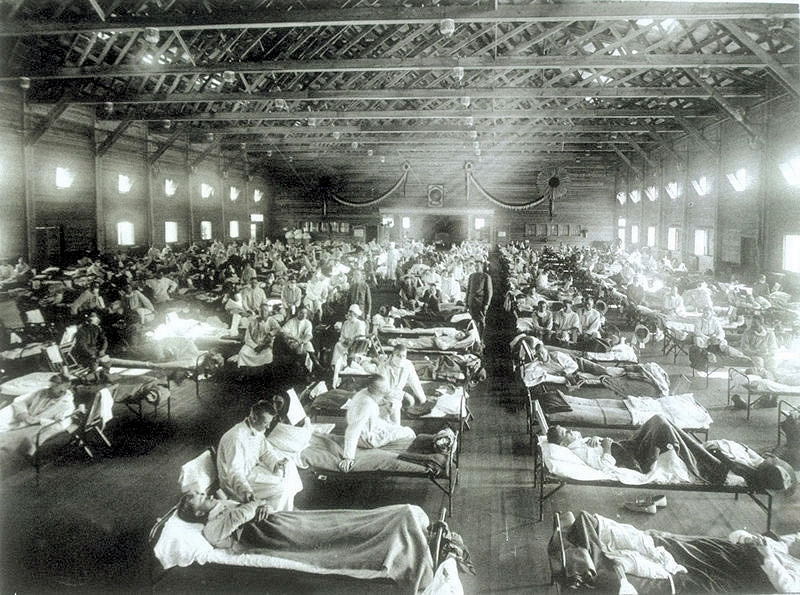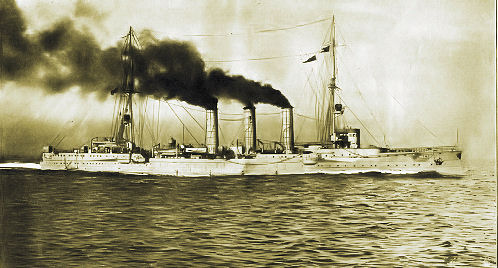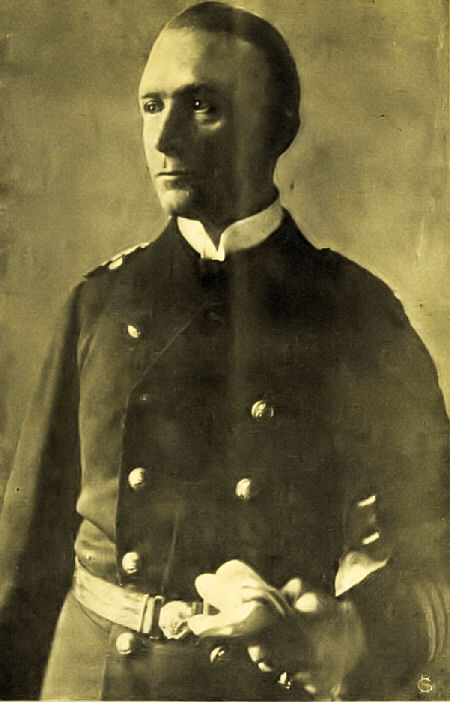
November 2014 |
Access Archives |

Last month I shared our plans for continuing to honor those who served and sacrificed for us in the Great War. For this anniversary month let me simply share a photo with you that captures what we are trying to honor. MH
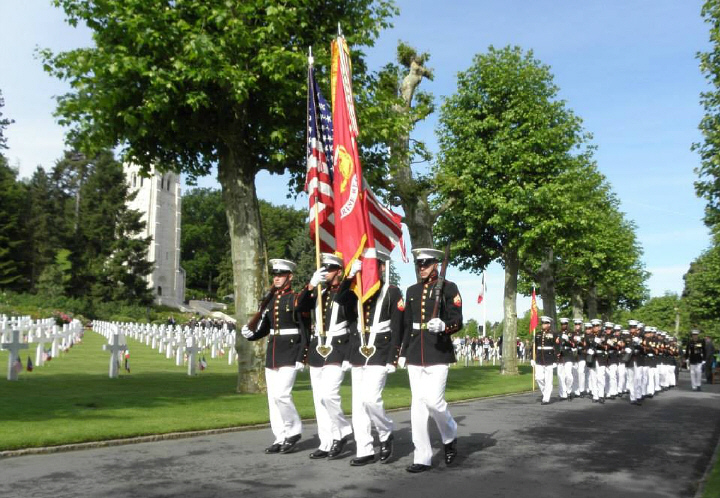 U.S. Marines Parade at the Aisne-Marne Cemetery
|
||||||||||||||||||||
Monthly Magazine of the First World War 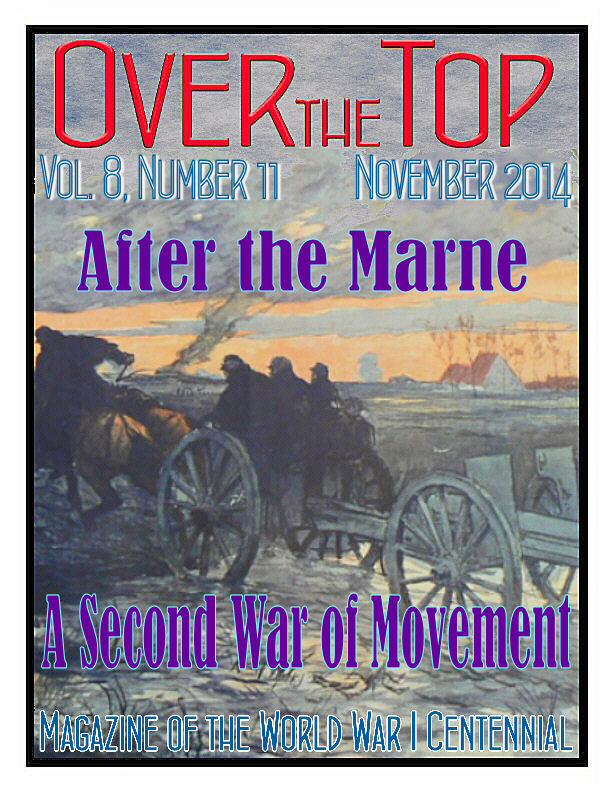
(downloadable flyer) |

|
2014
When: 7 November, 7 p.m. EST Where: National Cathedral, Washington, DC Content from the U.S. Center for War Letters, Music by the U.S Marine Corps Orchestra Live Webcast When: 7-8 November Where: National WWI Museum, Kansas City Sponsors: National WWI Centennial Commission, WWI Museum, WFA-U.S. Branch, WWIHA (Details) When: 14-15 November Where: Norfolk, VA Sponsor: MacArthur Memorial & Museum (Details) When: 15 November Where: Wedgewood at Metropolitan Golf Links; 11051 Doolittle Drive, Oakland, CA 94603 Guest Speaker: Prof. Leland Erickson on French Tank Service in WWI Email Sal Compagno for details. 2015When: 6-7 Feb 2015 Where: Tampa, FL Sponsor: University of South Florida (PDF Flyer) |
The interest in the Great War generated by the Centennial commemorations has led to an explosion of local events and ongoing displays of art and artifacts from the war. We simply lack the space here to list them all. Fortunately, however, the staff of the Centennial Commission has taken on the job of providing a listing of all these presentations they hear about. We will make their current listing available here for downloading and revise the document as it becomes available to us. Click HERE to download the current list.
A November 1914 Headline
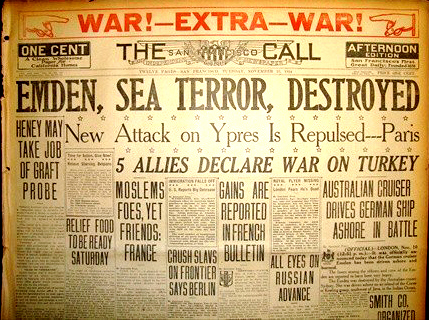
San Francisco Call, 18 November
(See article below on SMS Emden)

The First Battle of Ypres
The fall 1914 fighting around Ypres locked in the Western Front for 40 months, but today it is the least studied of all the major battles in Flanders.
The Relief: Coming up to the front lines through the communication trenches which extend a kilometer or so. On these occasions little love is lost on "beautiful moon-light nights.
![]() Overview from the Commonwealth War Graves Commission (Includes excellent campaign map and photo album)
Overview from the Commonwealth War Graves Commission (Includes excellent campaign map and photo album)
![]() 22 October 1914: Key Day at Langemarck
22 October 1914: Key Day at Langemarck
![]() 31 October 1914: Key Day at Gheluvelt Chateau
31 October 1914: Key Day at Gheluvelt Chateau
![]() 22 November 1914: Major Attacks Suspended
22 November 1914: Major Attacks Suspended
![]() Field Marshal Sir John French's First Ypres Despatch
Field Marshal Sir John French's First Ypres Despatch
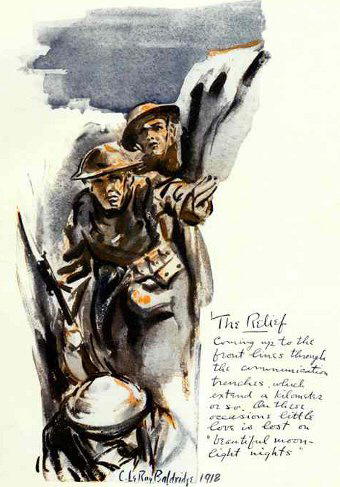
Illustrator LeRoy Baldridge, from I Was There with the Yanks in France, 1918.

Where Is the Armistice Document?
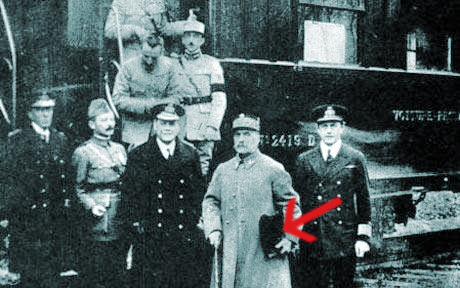
See the valise under General Foch's arm? It contains the instrument that the Allied and German representatives had just executed earlier in the morning on 11 November 1918.
For a quarter of a century, I have been frustrated in my every attempt to find the present whereabouts of that document. I am now prepared to offer a BIG REWARD to the first person who can: 1. provide the current location of it and 2. provide a means of my verifying that this is the actual location. To the first person who meets this test I am prepared to award the complete set of annual CDs for our monthly magazine OVER THE TOP, 2007-2014. This will include all 96 issues of the magazine plus dozens of extra features. First submittal that meets BOTH conditions wins. Email the editor at: greatwar@earthlink.net
PS: Please do not waste time telling us where it OUGHT to be or where it's RUMORED to be.

Retreat? Hell, we just got here!
Capt. Lloyd Williams, USMC, 1 June 1918
Capt. Williams was killed in the ensuing battle for Belleau Wood.

U.S. Centennial Organizations & Resourcesworldwar-1centennial.org/ theworldwar.org/ www.ww1-centennial.org/ history.army.mil/ www.firstdivisionmuseum.org/ www.abmc.gov/ www.overthefront.com/ www.nationalmuseum.af.mil/ www.worldwar1.com/dbc/ wwi-inventory.org/ wisconsinhistory.org/ www.uswarmemorials.org/ www.macarthurmemorial.org/ www.saving-hallowed-ground.org/ www.theprgroup.org/ |
The Centennial Ticker
|
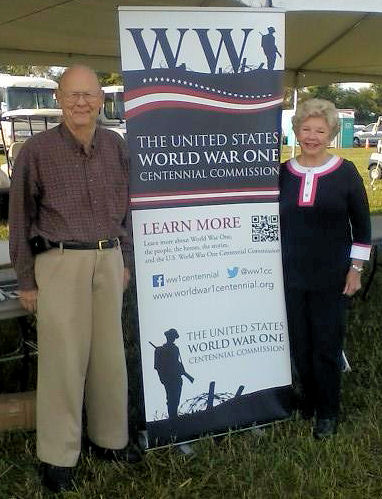 |
In November he will represent the Commission at two events. On 6 November he will be in Paris at the National Assembly for the world premiere of Claude Ribbe's feature film "The Black Swallow," the story of WWI African-American Aviator Eugene Bullard. On Armistice Day Mr. Hester will represent the Commission to honor France's Fallen of the Great War at the 11 November ceremonies at the Notre Dame de Lorette National Memorial, site of France's largest cemetery on the Western Front
Back in the U.S. Commissioner Libby O’Connell will attend a luncheon at the home of British ambassador Sir Peter Westmacott on 6 November. HRH The Princess Royal and Vice Admiral Sir Tim Laurence will be present to mark the launch of the Centennial Commemorations of WWI. There will be a memorial service at Arlington National Cemetery following the luncheon.
The Centennial Commission Calls for Volunteers!
worldwar-1centennial.org/index.php/help-us/volunteer-opportunities.html
Restoration Projects
Lafayette Escadrille Memorial Project:
Donations Needed!
The Lafayette Escadrille Memorial Working Group is encouraging those who have not yet contributed to the restoration fund to do so within the next month as the initial phase for the work is planned for early next year and funds are needed now.
Click to Download the Brochure with information on the project and details on how you can contribute
Château-Thierry Projects Announced
The French Department of the Aisne, the French National Tourist Office and the Town of Château-Thierry France are constructing a new American WWI Interpretive Center, the gateway area for most of the American battle action during WWI.
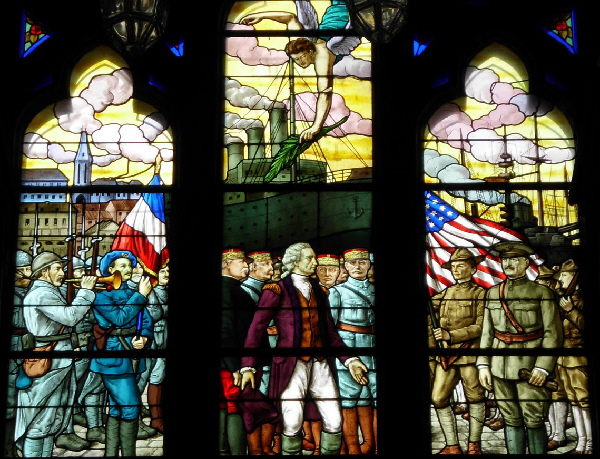
Stained Glass at the American Memorial Church, Château-Thierry
Planning activities and fundraising are under way to restore the WWI American Memorial Church, located in the town square. American families are encouraged to aid in the restoration work. This church was built on the Place de l’Hôtel de Ville in 1924 and paid for with money raised in America, notably Methodist Church contributions. It houses a stained glass window commemorating the long history of Franco-American friendship from Lafayette to generals of the First World War. (We will have more on how to contribute funds in future issues of the Trip-Wire.
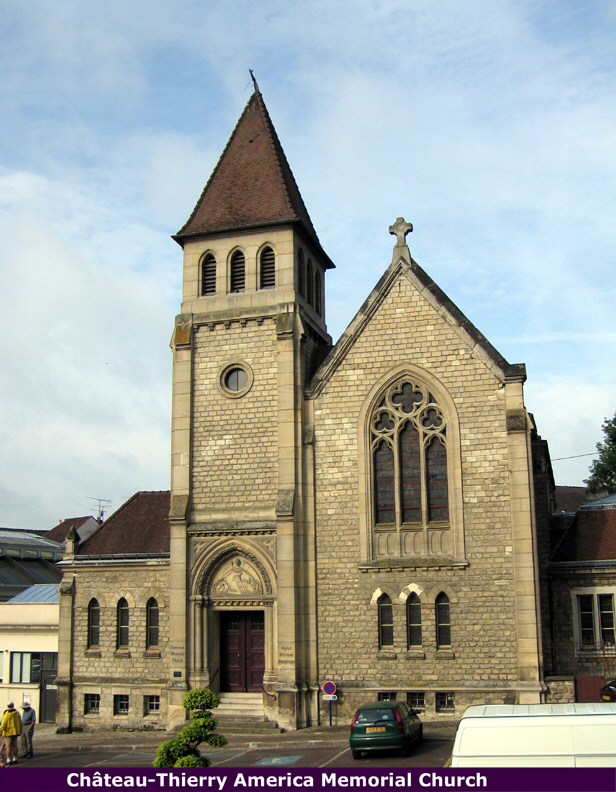
November's Big Event at the
National World War I Museum
2014 Symposium:
1914: Global War and American Neutrality
Your Editor will be at the event in Kansas City and I hope to meet some of you Trip-Wire readers there. Please say hello if you have a chance. The program looks to me to be outstanding. Below is some information from our friends at the museum.
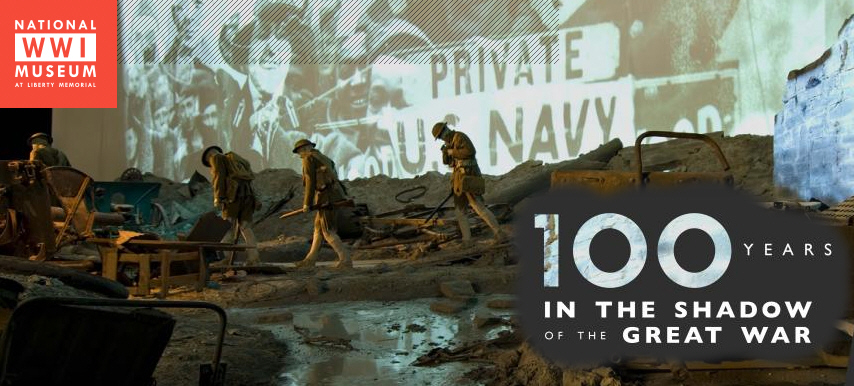
While Attending the Conference Visitors Will Have Full Access to
All the Museum's Exhibits
Examine the origins of, reactions to, and early confrontations in the First World War including the political, diplomatic, military, cultural, and scientific developments prior to the war that contributed to its outbreak. This not to be missed event is presented by the National World War I Museum and the U.S. Centennial Commission in partnership with the Western Front Association and the World War One Historical Association. Join speakers Christopher Capazzola, John Milton Cooper, Robert Doughty, Nicholas Lambert, Sean McMeekin, Michael Neiberg, Phillip Pattee, Dennis Showalter, Jay Winter, and others in a provocative exploration of European and American reactions in society and military on land and sea. Space is limited and available on a first-come, first-serve basis.
Registration Information at:
https://theworldwar.org/learn/2014-symposium
Commemorative Activites
|
||||||
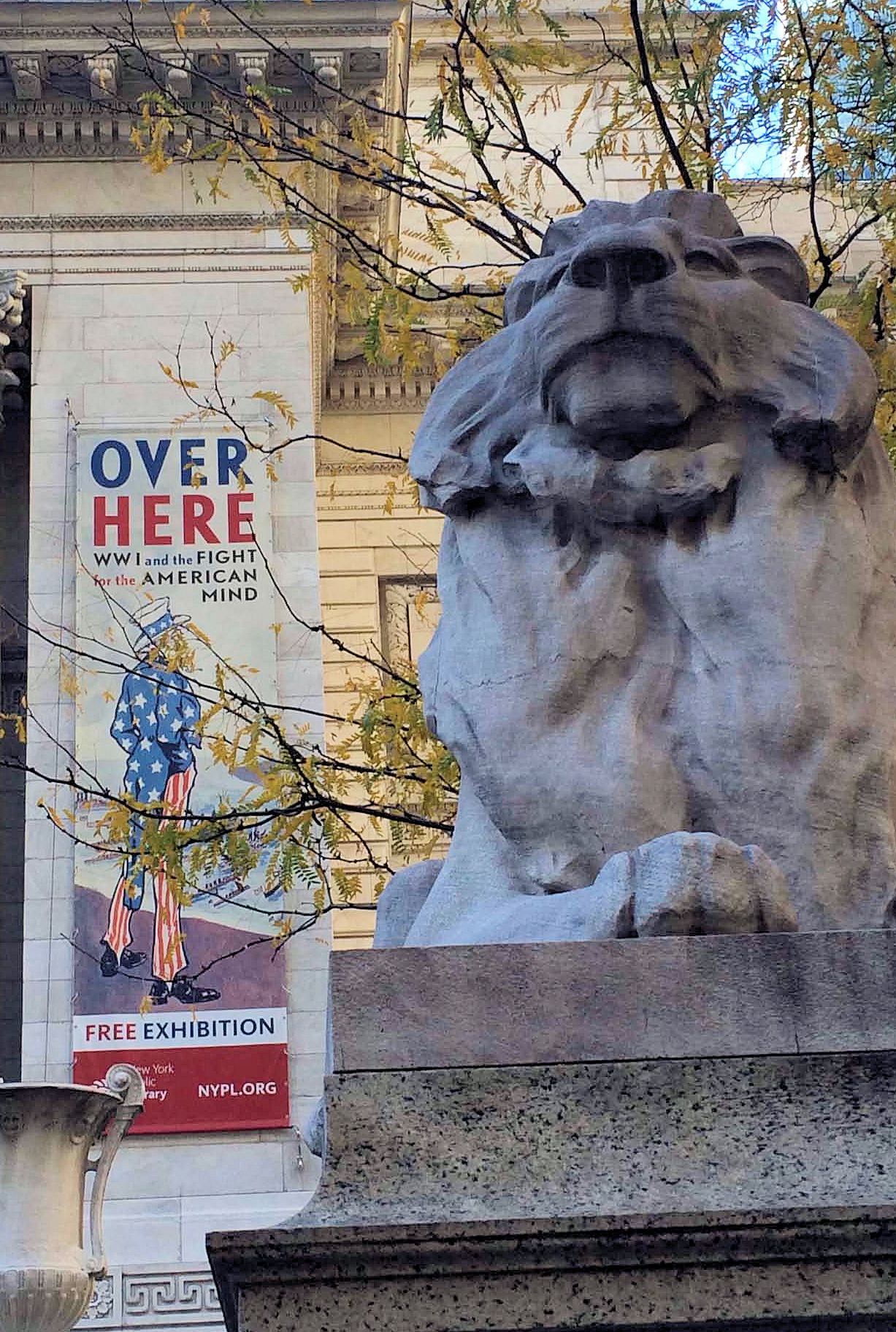 |
The New York Public Library has a remarkable program running until 15 February 2015 that draws on its own enormous collection of First World War resources. "Over Here: WWI and the Fight for the American Mind" explores the manner in which public relations, propaganda, and mass media in its many forms were used to shape and control public opinion about the war while also noting social and political issues that continue to resonate, such as freedom of speech and the press, xenophobia, and domestic espionage. http://www.nypl.org/events/exhibitions/overhere |
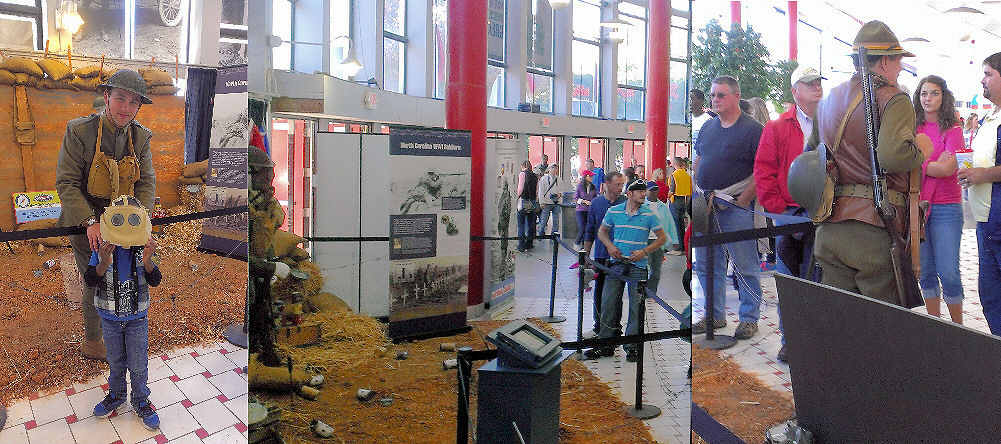 The North Carolina Department of Cultural Resources partnered with the North Carolina National Guard to develop an exhibit for the North Carolina State Fair. The Fairgrounds is the site of Camp Polk, a World War I training facility. Over a million people regularly attend the fair. The exhibit featured a trench section, complete with sandbags, two well-equipped mannequins, a concealed rat (it was fun for the kids to find "Charlie"), barbed wire, and lots of dirt! The exhibit also featured 11 panels explaining the experiences of North Carolinians in the war, from the homefront and training grounds, to the experiences of our soldiers in Europe. Three artifact cases contained artifacts from the North Carolina Museum of History, the North Carolina National Guard Museum, and the Graveyard of the Atlantic Museum. A dedicated group of living history interpreters from the Great War Tar Heels assisted with day-to-day staffing of the exhibit, many in uniform and interacting with the public. |
|
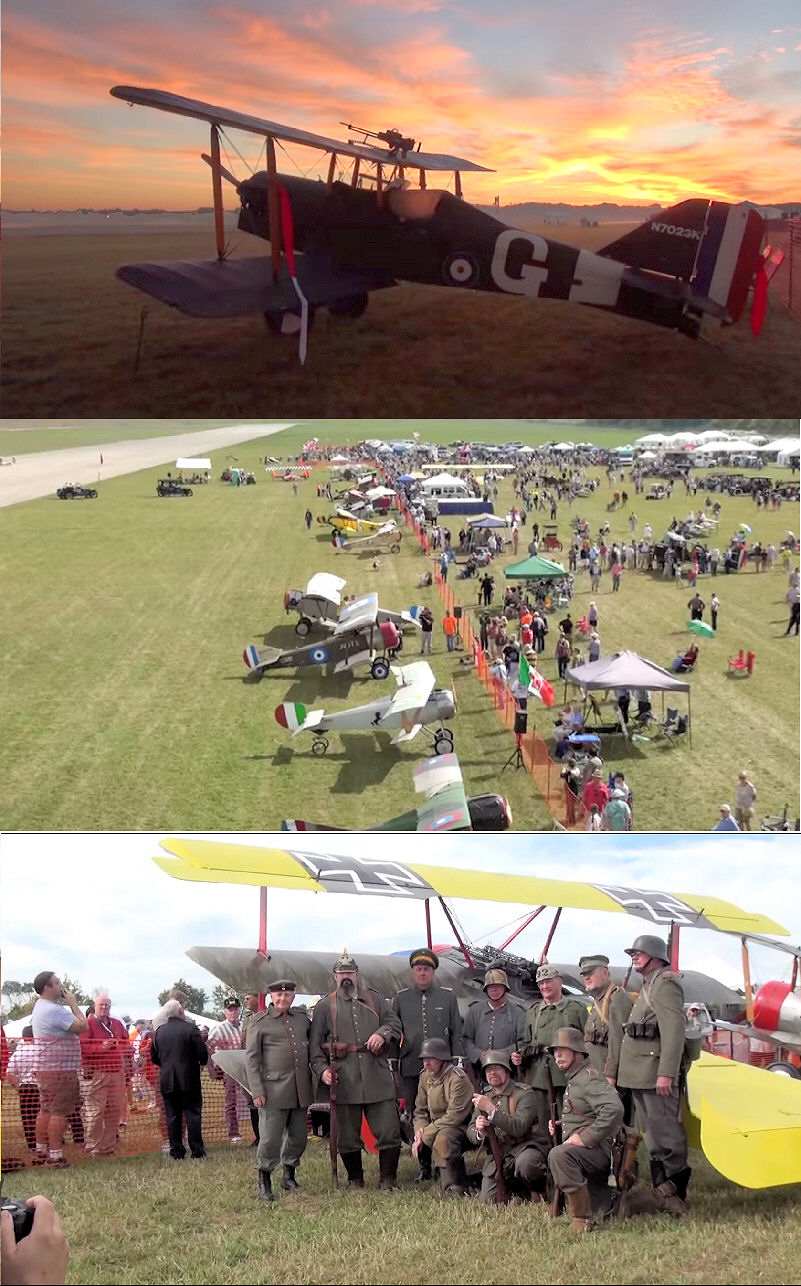 |
The National Museum of the U.S. Air Force and the League of World War I Aviation Historians combined for a remarkable event in late September. Combining the League's Biennial Seminar, "The Centennial of Aviation Warfare, Part 1," with a two-day "Dawn Patrol Fly-In" drew huge crowds to the museum grounds on Wright-Patterson, AFB, near Dayton, Ohio. |
(Email the Editor)

November 1914:
|
|
Did the blockade starve Germany and the other Central Powers into defeat in 1918? It has recently been argued that this idea, a common assumption of First World War historiography, is mistaken. According to the revisionists, the German people often went hungry as a result of the blockade, yet few actually starved; the widely derided German system of rationing was, in fact, no less efficient than the systems used in France or Britain; and German capitulation in 1918 was precipitated on the Western Front, not among the discontented populace back home. Nonetheless, most historians still maintain that the "hunger blockade" contributed hugely to the outcome of the First World War. By 1915, German imports had fallen by 55% from prewar levels. Aside from causing shortages in important raw materials such as coal and various non-ferrous metals, the blockade cut off fertiliser supplies that were vital to German agriculture. Staple foodstuffs such as grain, potatoes, meat, and dairy products became so scarce by the winter of 1916 that many people subsisted on a diet of ersatz products that ranged from so-called "war bread" (Kriegsbrot) to powdered milk. The shortages caused looting and food riots, not only in Germany, but also in the Habsburg cities of Vienna and Budapest, where wartime privations were felt equally acutely.
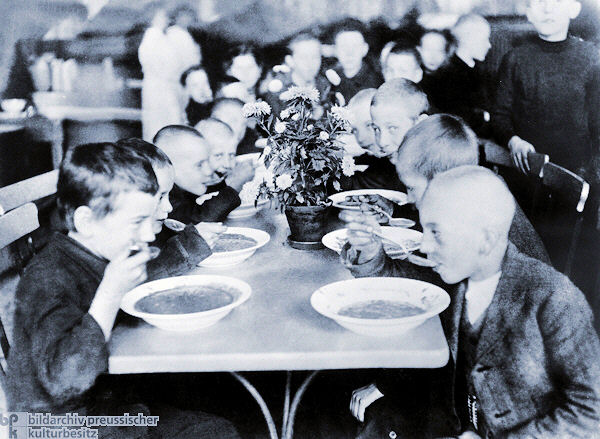
Children in a Berlin Soup Kitchen, 1917
The German government made strenuous attempts to alleviate the worst effects of the blockade. The Hindenburg programme, introduced in December 1916, was designed to raise productivity by ordering the compulsory employment of all men between the ages of 17 and 60. A complicated system of rationing, first introduced in January 1915, aimed to ensure that at least minimum nutritional needs were met. In larger cities, "war kitchens" provided cheap meals en masse to impoverished local citizens or children. Such schemes, however, enjoyed only limited success. The average daily diet of 1,000 calories was insufficient even for small children. Disorders related to malnutrition — scurvy, tuberculosis, and dysentery — were common by 1917. Official statistics attributed nearly 763,000 wartime deaths in Germany to starvation caused by the Allied blockade. This figure excluded the further 150,000 German victims of the 1918 influenza pandemic, which inevitably caused disproportionate suffering among those already weakened by malnutrition and related diseases. Although the blockade made an important contribution to the Allied victory, many of its devastating side effects cast a long shadow over postwar German society.
Source: British National Archives

We Are Now Accepting Bookings for Our 2015 Centennial Tours:
2-10 May 2015: I will lead this tour and cover the 1914 and 1915 Battles North of Paris, including the Aisne & the Race to the Sea, the Siege of Antwerp, the First and Second Battles of Ypres, the Christmas Truce, and the French and British Battles in Artois. Deposits received by
15-23 August 2015: My summer centennial expedition will cover the Western Front Battles of 1914 and 1915 East of Paris in the Chemin des Dames, Champagne, Argonne, and St. Mihiel sectors, PLUS the American Battlefields of 1918 at Château-Thierry, Blanc Mont, St. Mihiel, and the Meuse-Argonne. Deposits received by 15 February 2015 will result in a 5% reduction in the tour costs. Full payment by that date will result in a 10% discount.
Gallipoli and the Dardanelles Tour
Our 100th Anniversary of Gallipoli Tour to be conducted in collaboration with Mat McLachlan Battlefield Tours of Australia is now full. We are, however, accepting waiting list requests, which require a deposit that is fully refundable.
Western Front Tours — Full Combined Brochure Now Available
2 November (extended to 11 November) will result in a 5% reduction in the tour costs. Full payment by Armistice Day will result in a 10% discount.
Download Flyers

Click on Image to Send Email
 Click on Title to Access StoryHistorian Richard Rubin Continues To Do Yeoman Work To Ensure America's Role in the War is Not Forgotten |
 Those Literary MarinesThe Marine Brigade of the AEF's 2nd Division left a remarkable literary legacy. Here are four of their most remembered:
|
 A Doughboy Catches the Flu
|

SMS Emden — The War's Greatest Surface Raider
| |||
| Thanks to each and every one of you who has contributed material for this issue. Until our next issue, your editor, Mike Hanlon. |
|
|
Content © Michael E. Hanlon
